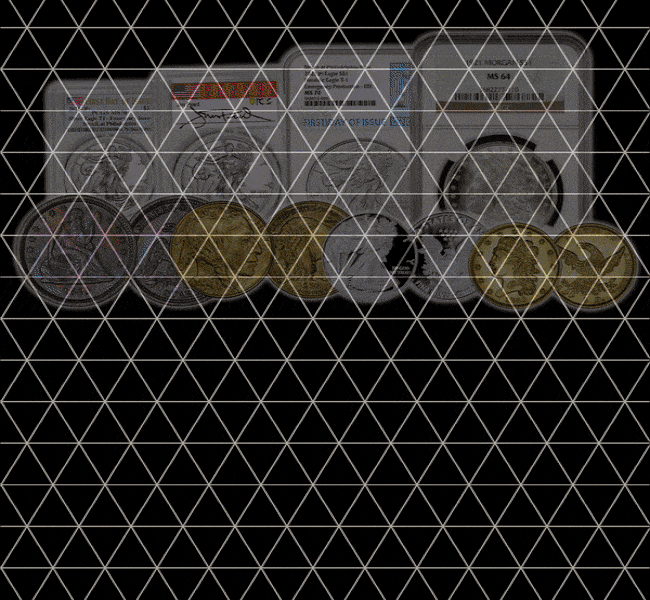By Roger W. Burdette, special to CoinWeek …..
Part 1 | Part 2
* * *
Readability
“Readability” in the context of our discussion refers to the ability of people to (physically) read the words on a document. It is of little help in finding new information to have a nice digital image on your computer screen and not be able to read what is written. In the past, this was associated with the original text being written in an unfamiliar language. Less frequently, the problem was poor image quality (which can still be seen when handling old microfilm and microfiche) or damaged/illegible text.
Today, the problem is not language but handwriting.
During all of the 18th century and most of the 19th, all routine documents and letters were written in longhand (cursive) manuscript. Printing presses turned out official documents in type-set versions, but everything started in handwritten text. Flowing, or longhand, writing is much faster than block printing words. For generations it was the standard of literate communication and part of the standard public school curriculum beginning in third grade. Now, few children learn cursive or longhand writing. School book reports are turned in using computer-generated text in standard fonts and point sizes. In-class tests and essay questions are rendered in block printing that, at least to me, resembles second-grade work–all that’s missing is wide ruled paper and big chunky pencils. Adults under the age of 50 often cannot read or write cursive except for a scribbled signature – entirely appropriate for use on a tiny FedEx or UPS computer screen. If one cannot read what is written, then all the work of scanning and making the page image available was wasted.
Directly put, much of today’s American population are functionally illiterate when faced with longhand or cursive writing.
But back to archival Mint documents.
All United States Mint documents up to the late 1870s, when the typewriter was first introduced, were written by hand. It was not until 1897 that Secretary of the Treasury John G. Carlisle ordered all correspondence to be typed, not handwritten. Typed letters were easier to read, but introduced their own problems which we’ll discuss later.
Below are two short documents typical of 19th century handwriting by professional clerks, followed by transcriptions of each. For nearly everyone reading CoinWeek, or any other collector’s publication, the original text is difficult to read. This means when we look at the original and transcription together, we are getting our information from the transcription only.
March 27, 1875 Hon. James Pollock, Esq. Supt. Mint, U.S. Philadelphia Sir: The charge for the coinage of the Trade Dollar at the mints of the United States is hereby increased from the half of one per cent, to one percent on the nominal value, to take effect on and after the 29th inst. Very respectfully H.R. Linderman, Director.
Telegram
August 22, 1893 Superintendent Mint U.S. Philadelphia, Penna. How much do you included in your locals, as delivered by Hoskier, Wood and Company on their sale of July twenty-eighth, and its cost? R. E. Preston, Acting Director
Official documents, like the ones above, were written by clerks who had to pass a handwriting test. The flowing text is uniform and letters are formed consistently. There are a few quirks–such as the letter “t” in the word “cost” just above Preston’s signature, where the cross bar extends only to the right. And there are, as would be expected, individual differences (especially with left-handed writers). But most clerks were trained in the Spencerian style of handwriting, and that made the text accessible to contemporary readers.
But that did not apply to those writing to the Mint Bureau, including members of Congress. Below is a note written January 30, 1878 by Georgia Representative Alexander Stephens (GA8), Chairman of the Coinage Committee concerning a small plate of “goloid” metal alloy.
Dear Doctor [Linderman]; I did not know when I gave the plate to the stenographer [recently] to return to you for me that Dr. Hubbell had any further use for it before the Committee, etc. I wish therefore if you still have it you would hand it to him that he may use it as he wishes before the Committee. I will see that it is safely returned to you again. Very respectfully, Alexander Stephens Chairman, Committee on Coinage, etc.
This is one of Stephens’ better handwriting samples – some are nearly indecipherable for an experienced cursive reader; and there are examples in Mint archives that are much worse.
With few modern users able to read and understand longhand, the content of original and digital documents remains hidden. It is as if there were a code substituting arbitrary symbols for English language letters and numbers. Without some sort of magic decoder ring from a box of corn flakes, documents were nothing but gibberish and squiggles.
The most reliable solution is transcription.
As alluded to above, if we accompany the original with a good transcription, then the text and its meaning immediately become clear. The coded message is revealed. To get a good transcription, we rely on people who can read longhand manuscript and convert handwriting into standard alphanumeric characters to display on a computer screen or print. The converted words and numbers also give us the ability to use software to search documents for desirable content. If the search-and-find program is good enough, then we can quickly locate any word, combination of words, quoted phrase, or topic of interest.
Thus, it is not enough to digitize old U.S. Mint documents. That’s just the first step. The content, and the information hidden therein, is revealed only when we have someone transcribe handwritten text into modern human- and machine-readable characters. When this is accomplished, our once-secret code is broken and we can move forward in updating and correcting numismatic knowledge.
* * * * * *
